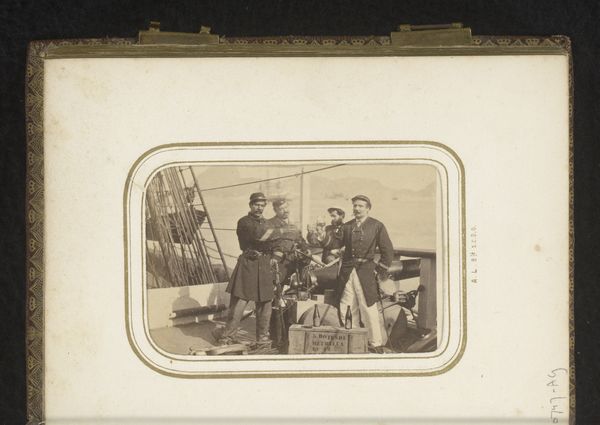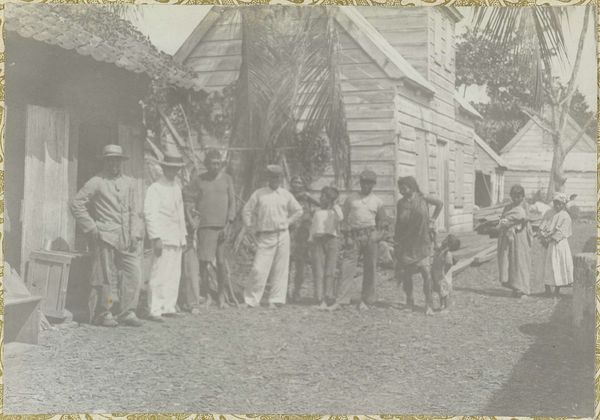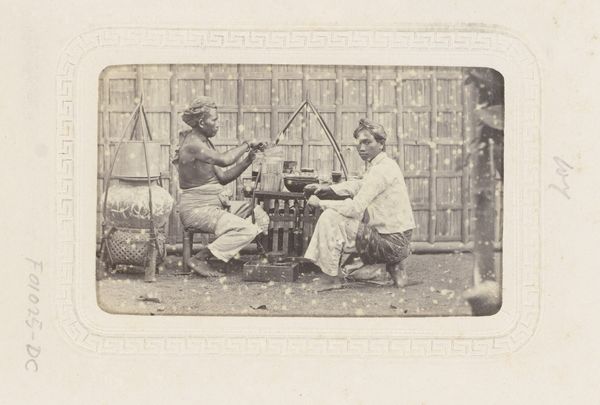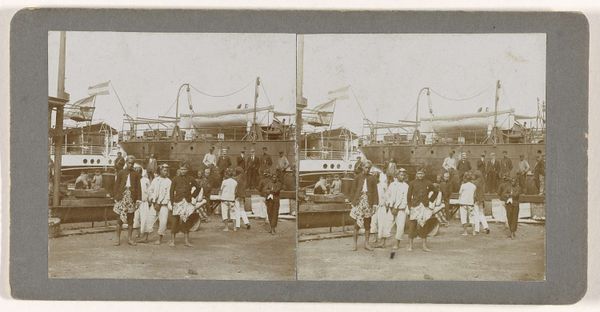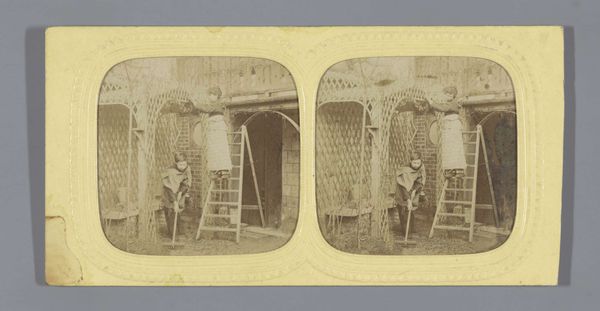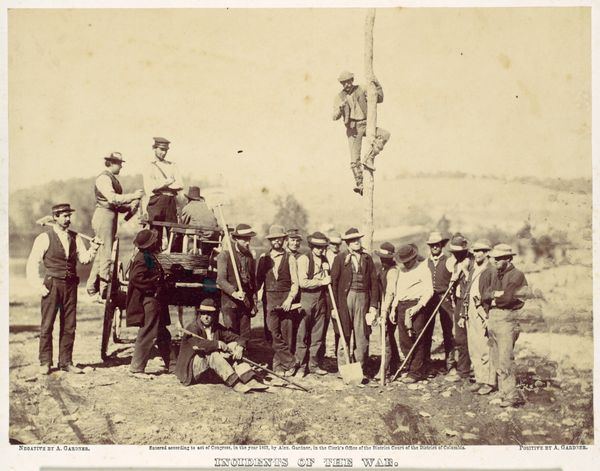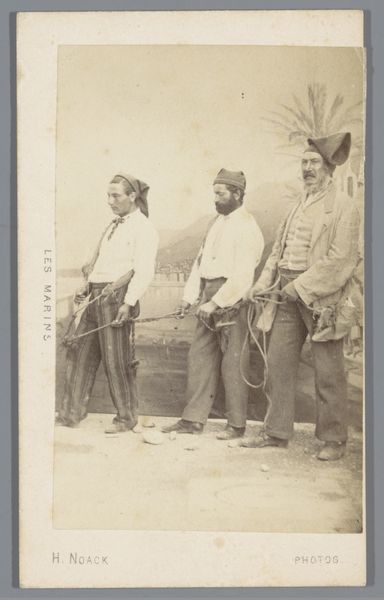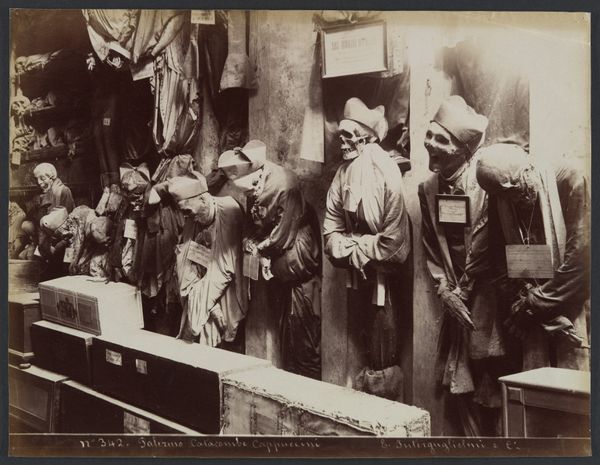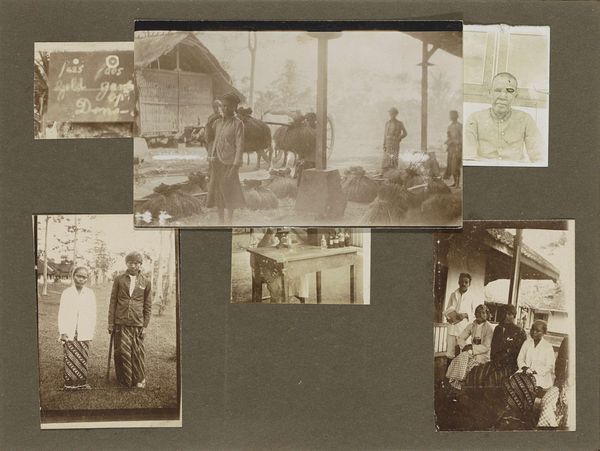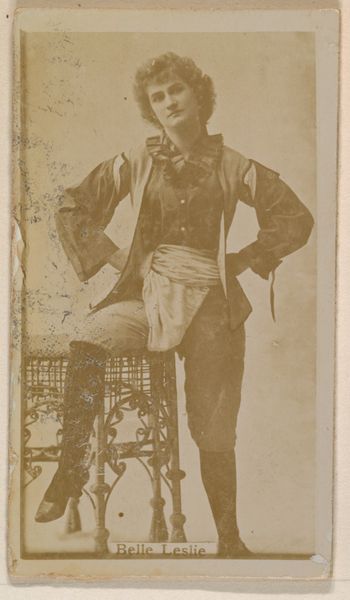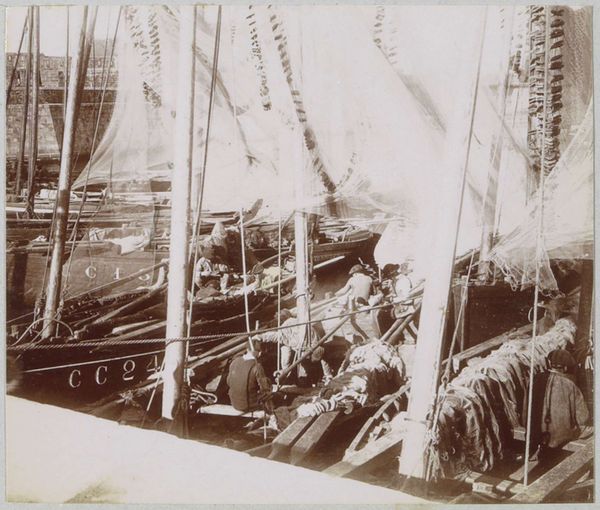
photography, albumen-print
#
portrait
#
african-art
#
archive photography
#
photography
#
orientalism
#
genre-painting
#
albumen-print
#
realism
Dimensions: height 85 mm, height 52 mm
Copyright: Rijks Museum: Open Domain
Curator: Here we have an albumen print from the period between 1857 and 1880. Its title is "Twee mannen met een vrouw in een draagmat"—or, in English, "Two men with a woman in a hammock." Editor: There's a quiet intimacy to this image; despite the inherent power dynamics suggested by the men carrying the woman, there’s a kind of serenity, almost like a scene from a peaceful dream. Curator: The composition certainly draws the eye, doesn't it? The geometry of the hammock—those intersecting lines—creates a fascinating interplay with the backdrop, likely woven bamboo. The figures are arranged with a keen awareness of spatial relations; we might note the woman occupies a privileged central location, framed by the male figures. Editor: Absolutely. I am thinking of the contrasts. The raw labor versus refined ease. And that contained energy in the two carriers; a stillness despite exertion. There's an unspoken narrative, wouldn't you agree? Something just beneath the surface. I feel its more nuanced and even playful than what the camera might indicate. Curator: Indeed, the potential narratives are plentiful. If we unpack the semiotics here, we see immediately that the hammock acts as more than mere transport; it symbolizes status, luxury, perhaps even vulnerability. One could consider what elements such as clothing represent; note differences in garments of individuals in comparison to what is known from historical data on social-economical dynamics during this period. Editor: Yes! The framing, the balance... it is making me ponder how Western gazes interpreted and possibly misinterpreted these everyday Asian scenarios during that period. The print does suggest a certain artificiality as if staged. Curator: It’s essential to consider its place within Orientalist photography—these staged or manipulated images crafted for European consumption often perpetuated stereotypes. Yet the careful lighting and balanced arrangement also highlight an undeniable artistry. It does seem a product created in this time rather than a snapshot in time as many believe photographs to capture. Editor: It's left me with a feeling that’s caught between worlds—both appreciating its artistic value, but critical to cultural misrepresentations and biased visual tropes that photography presented, and occasionally still presents. Curator: A compelling observation to consider these juxtapositions which shape our perceptions. The complexities, so intricately embedded within this piece, certainly challenge us to view such ethnographic records critically.
Comments
No comments
Be the first to comment and join the conversation on the ultimate creative platform.
